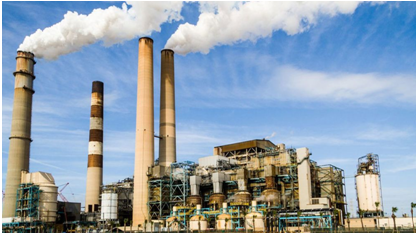INP-WealthPk
Amir Khan

Pakistan’s large-scale manufacturing (LSM) sector has witnessed a noticeable decline in production across various key industries. From July to April 2023-24, the sector recorded an overall growth rate of -3.08%.Talking to WealthPK, Joint Secretary Large Enterprises Development at the Ministry of Industries and Production Syed Sibt-e-Abbas Zaidi said the negative growth rate signified a tough economic climate. Various sectors are experiencing decreased demand and production problems.He added that the manufacturing sector was encountering numerous difficulties, such as diminished consumer demand, supply chain disruptions, and economic uncertainties.
In the glass manufacturing sector, production of sheet/float glass decreased by 7.09% from 19,367 thousand square meters in the previous fiscal year 2023 to 17,994 thousand square meters in FY24. This decline could be attributed to reduced construction activities and a slowdown in the real estate sector, impacting the demand for construction materials. Similarly, the cement industry reported a production decline of 3.33%, with the output falling from 34,380 thousand tons to 33,235 thousand tons. Talking to WealthPK, Additional Secretary Industries and Production Muhammad Asad Islam Mahani said the cement sector, heavily tied to infrastructure and construction projects, reflected a broader economic slowdown and reduced investment in new construction projects.
In addition, the steel sector, a critical component of industrial manufacturing, also showed a downturn. The private sector steel melters reported a 3.68% decrease in the production of ingots and billets, from 4,458,000 tons to 4,294,000 tons. Furthermore, these decreases suggest a reduction in industrial and construction activities, which directly impacts the demand for steel products. The automotive sector experienced a significant production decline across various categories. The combined production of cars, jeeps, and SUVs dropped by 32.27%, from 117,731 units to 79,743 units.Specifically, car production fell by 35.17%, and jeep/SUV production decreased by 22.14%. Light commercial vehicles (LCVs) saw the most drastic reduction, with a 57.79% decline in production, plummeting from 20,245 units to 8,546 units.
The motorcycle segment, a vital part of the automotive industry, also showed a decline. The production fell by 7.34%, from 1,093,119 units to 1,012,855 units. This reduction reflects the overall economic slowdown and reduced purchasing power of the consumers. Muhammad Asad highlighted that the downturn in the large-scale manufacturing sector necessitated specific policy measures to revive the industrial growth. He suggested that tackling fundamental problems, such as upgrading infrastructure, offering investment incentives, and improving the business climate, could boost production and aid economic recovery. He urged the industry stakeholders to work together to develop strategies that could reverse these trends and foster sustainable growth in the industrial sector.
Credit: INP-WealthPk













